Understanding How Color Psychology Affect Your Mood & Emotions
Have you ever wondered how certain colors seem to speak to your soul? How colors represent the essence of who you are? They seem to speak a wordless language. Color introduces you before you utter a word. They tell a lot about your personality, your identity, and often what kind of mood you’re in.
What’s Your Favorite Color?
How many times have you been asked, “What’s your favorite color?” Why do people ask this question? I often ask this question when I meet someone new and want to do a deeper dive to get to know them better. Color can be a valuable source of information. Color choice can help you understand others, but more importantly, color can help you get to know yourself, including how it impacts your well-being.
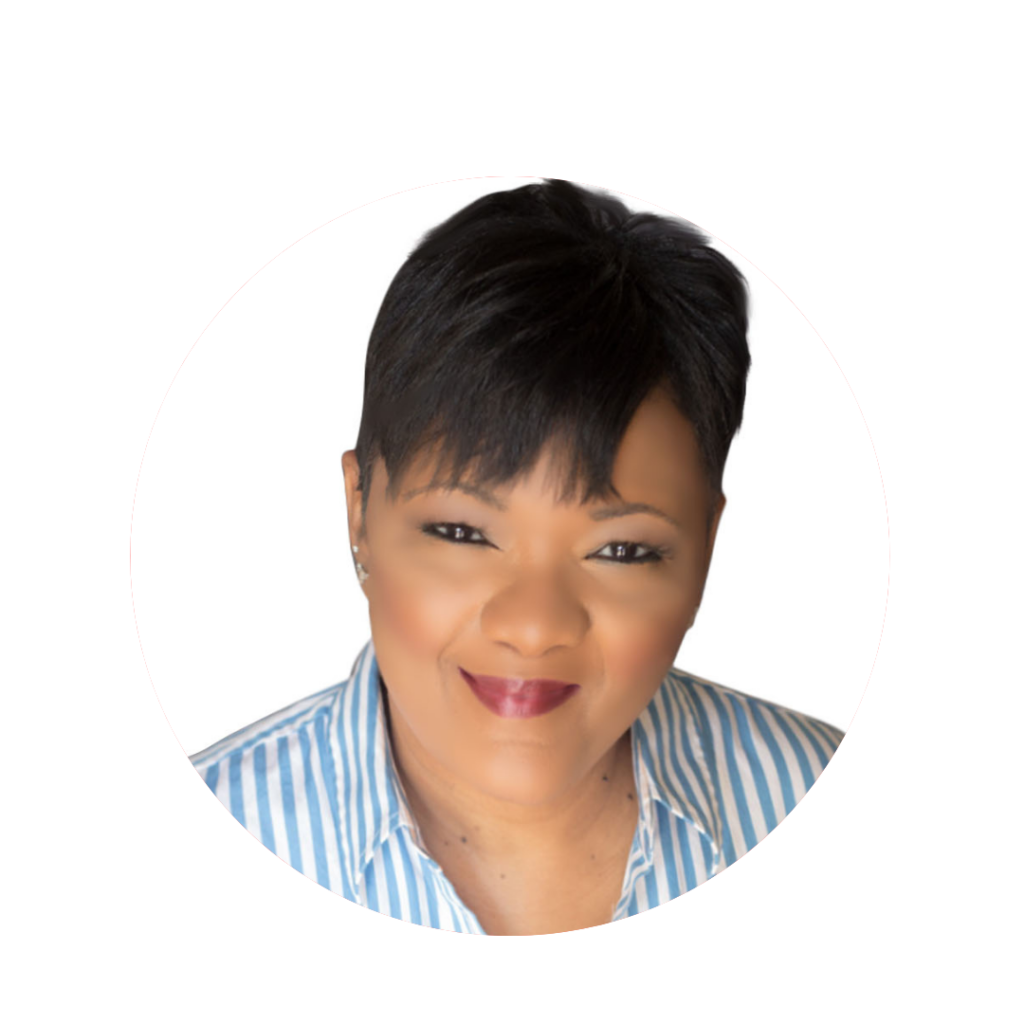
BOLD SELF-LOVE
PERSONAL ACHIEVEMENT
PROFESSIONAL SUCCESS
JOYFUL FULFILLED LIFE
Color Your World to Attract Peace, Love, Joy & Fulfillment
The world is full of color and it’s often used to promote health and wellness.
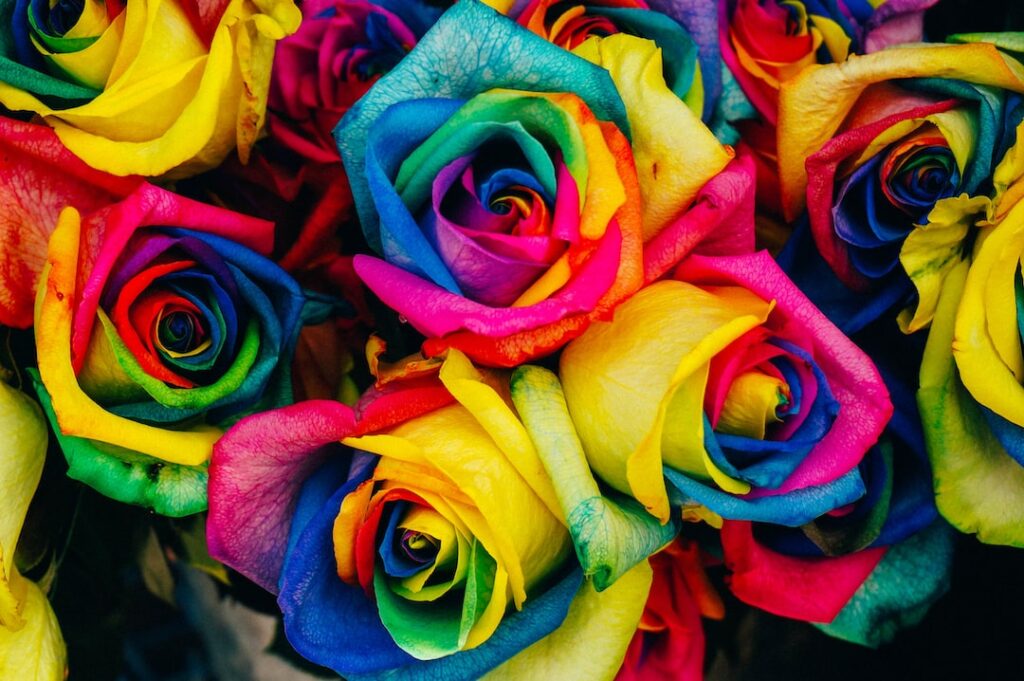
Applying Color Psychology to Everyday Life
The psychology of color is based on the mental and emotional effects colors have on sighted people in all facets of life.
More than we realize color plays more of an influential role in our lives. It can affect our minds, bodies, and overall mood. How color is perceived is subjective for some, but we have colors that are widely recognized for certain things worldwide.
Colors close to the red spectrum are warmer colors, including red, orange, and yellow. These warm colors evoke emotions ranging from feelings of cozy and comfort to feelings of anger and hostility. Whereas blue colors like purple and green are known for evoking feelings of calm, sadness, or indifference.
Color theory is the idea that the colors can have an effect on the person’s health – whether physical, mental health. Color psychology is based on the idea that the colors a sighted person is exposed to can have an effect on that person’s emotions and even on the individual’s overall health.
Alternative therapies are known to help improve physical and mental health. Color therapy is one of these alternatives that is touted as a way to help people heal, by using colors to affect the person’s mental or physical state.
In color theory, every color – from white to black and everything in between – has an effect on how a person thinks, acts, and responds to various stimuli in their world.
According to the Art Therapy Blog, the use of color to help people heal goes back to the ancient Greeks, Egyptians, and Chinese, all of whom used color to try to affect the mental states of people through the colors used to decorate rooms, the incorporation of natural colors to induce a calm state, and the use of light to balance mental states. In fact, for at least one condition – seasonal affective disorder, or SAD – research has shown that light therapy can help to mitigate the depression and anxiety caused by the disorder, as referenced by Mayo Clinic.
The following color analysis is from research found on Medium, “How Color Affects Your Mood and Mental Health”
The Effects Of Blue On Your Mental Health
Everyone has a favorite color, or a color that they naturally gravitate towards. When you’re feeling sad or you are depressed, people will refer to it as ‘having the blues’. But why is this? In an early study during the 1930’s, Siegfried E Katz of the New York Psychiatric Institute published a study in the Journal of Psychology called Color Preference Of The Insane.
Effectively, the study involved exposing 134 hospitalized patients to small triangles of colors. The study was limited to 6 colors. There was no white or black, only red, orange, yellow, green, blue and violet. The patients were asked to point out the best color and then point out the next best, and so forth. Interestingly, the color blue was the most popular for being ‘the best color’.
The study implied that if you are suffering from mental health, or an extreme mental health disorder, it’s likely that you associate with the color blue more so than other colors. Studies like this, and sayings like ‘having the blues’ enforce the color blues presentness in mental health. So should you limit your exposure if you’re suffering with anxiety or depression?
On the flip side, many will experience confidence with the color blue. Blue can also be associated with cool, content, goals, and determination.
Colors can influence our decision-making, thinking, and impact our moods. Depending on our interpretations, they can directly impact our emotions.
Click to Tweet
The Effects Of Green On Your Mental Health
The color green is widely accepted as the color of nourishment, growth and health. Many health brands use the color green for their logos for example to give the consumer a sense of health and nourishment. The psychology is, using the color green encourages a sense of trust and well-being. This by itself can have a big impact on whether the consumer goes on to buy a product.
Green can have big benefits for you mental health. Surrounding yourself with colors of green can enforce feelings of restoration and naturality. This is why spending time in nature can be an effective way to balance your mind and mood. The various shades of green in a natural environment manifest sensations of well-being and peacefulness.
Green is a color used to imply regeneration. We see green on our screens when we recharge our phone batteries or health bars when we play video games.
Surrounding yourself in your home with shades of green could bring balance to your mind.
The Effects Of Grey On Your Mental Health
Shades of grey are associated with calm and neutrality. Grey is another color like green that can bring balance to your mind and emotions. Because it’s such a neutral color, it has the power to bring sensations of stillness.
Grey is neither here or there, right between black and white. When we’re suffering from anxiety or stress, we often have extreme thoughts that we put through a negative filter. We often refer to things as being ‘good’ or ‘bad’ with little room in the middle. This ‘closed mind’ way of thinking does not allow us to see the bigger picture in different situations. Grey, whilst maye seeming dull and boring, can bring about that ‘middle ground’ that we need with our thoughts.
Grey encourages feelings of authority, possibility and strength. These are all feelings which we need when we’re suffering from anxiety, depression or stress. CBT offers us the opportunity to challenge our thoughts and view our thoughts from different angles. Rather than labeling something either ‘good’ or ‘bad’, we are able to see all of the other outcomes there might be.
Grey can give us the strength we need when we are down. The color also represents structure (often seen in the foundation of buildings) which encourages feelings of togetherness and a strong self.
Do you think grey is dull? Maybe it could help you to feel calmer and broaden your mind and mood.
The Effects Of Yellow On Your Mental Health
Yellow has one of the most powerful effects on your mood and mental health. Yellow represents happiness, clarity and energy. Being so bright, it’s often used in children’s advertisements to grab attention quickly. Yellow is associated with freshness and regeneration much like green, however, too much exposure to yellow can have negative effects.
Studies have shown that yellow in the right tone can spark creativity and wellbeing. However, studies have also shown that babies spending too much time in a bright yellow room often cry more due to the intense stimulus yellow offers. Darker yellow is also used as caution signs on the road to give warnings to drivers. It grabs your attention and encourages a feeling of uncertainty and anxiety.
Too much yellow exposure can also cause forgetfulness and loss of focus. Yellow is powerful in the fact that it can overstimulate the brain. By doing so for long periods, it’s thought that it can increase anxiety and cause low self-esteem.
Because yellow packs such a powerful punch, it’s better to use yellow in small doses, rather than painting your room bright yellow. For example, having a sunflower on your unit provides enough positive stimuli without being overbearing in a room environment.
The Effects Of Purple On Your Mental Health
Yellow has one of the most powerful effects on your mood and mental health. Yellow represents happiness, clarity and energy. Being so bright, it’s often used in children’s advertisements to grab attention quickly. Yellow is associated with freshness and regeneration much like green, however, too much exposure to yellow can have negative effects.
Studies have shown that yellow in the right tone can spark creativity and wellbeing. However, studies have also shown that babies spending too much time in a bright yellow room often cry more due to the intense stimulus yellow offers. Darker yellow is also used as caution signs on the road to give warnings to drivers. It grabs your attention and encourages a feeling of uncertainty and anxiety.
Too much yellow exposure can also cause forgetfulness and loss of focus. Yellow is powerful in the fact that it can overstimulate the brain. By doing so for long periods, it’s thought that it can increase anxiety and cause low self-esteem.
Because yellow packs such a powerful punch, it’s better to use yellow in small doses, rather than painting your room bright yellow. For example, having a sunflower on your unit provides enough positive stimuli without being overbearing in a room environment.
The Effects Of White On Your Mental Health
The color white is a neutral color. It’s associated with pureness and clarity. Many modern establishments use white to to evoke feelings of newness and cleanliness. Although some may not consider white to be a color and instead more of a shade, white is still powerful for lifting spirits when we’re feeling down.
White gives sensations of space and hygiene and is often used to make rooms feel bigger than they really are. Often times, medical environments will use the color white to enforce a sense of hygiene. When we see white, we generally think about clarity and clean environments.
Using white can lift spirits up even more when used alongside a color like green or yellow. The powerful combination of clean and natural feeling colors can create mental sensations of clarity when we’re feeling low.
The Effects Of Purple On Your Mental Health
Of course, all of the above is subjective like we previously mentioned. Your own personal experiences will determine how you interpret certain colors. You might find the color blue, for example, a positive influence on your mental health. You might even find that you can’t stand the color green because of certain experiences.
Because we all interpret colors differently, identifying how colors make you feel personally is important. Using colors to enhance your mood becomes easy when you know what you respond well to.
For my own mental health, I personally like to surround myself with different shades of green. This way I know I’m always growing and giving myself the sensation of well-being. This is achieved by spending time in nature, and surrounding myself with organic materials indoors.
Red
loveromancegentlewarmthcomfortenergyexcitementintensitylifeblood
White
purityinnocencecleanlinesssense of spaceneutralitymourning -some culturesminimalistchic
Yellow
happinesslaughtercheerywarmthoptimismhungerintensityfrustrationangerattention-getting
Black
authorityelegance | sophisticated powerstrengthevilintelligencethinning | slimmingdeath | mourning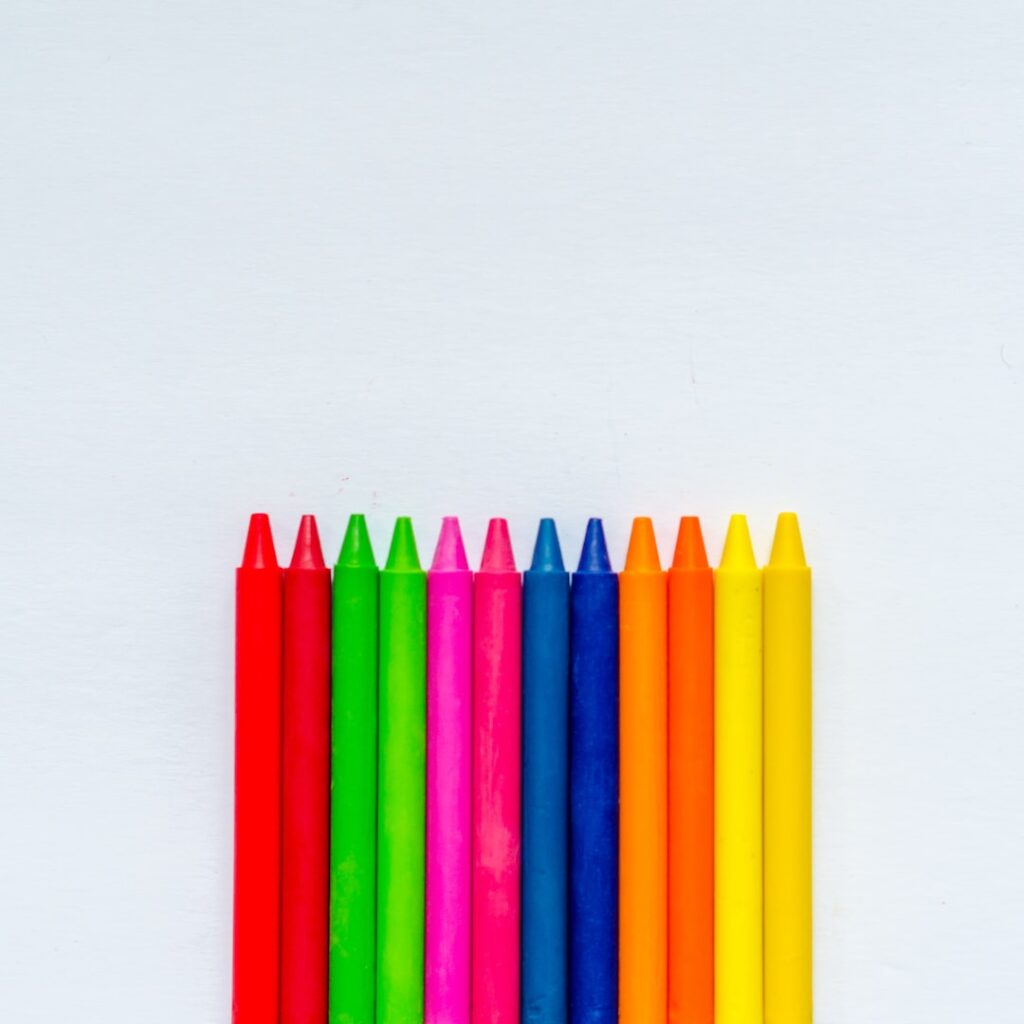
Pink
love | romancegentle | calmingagitation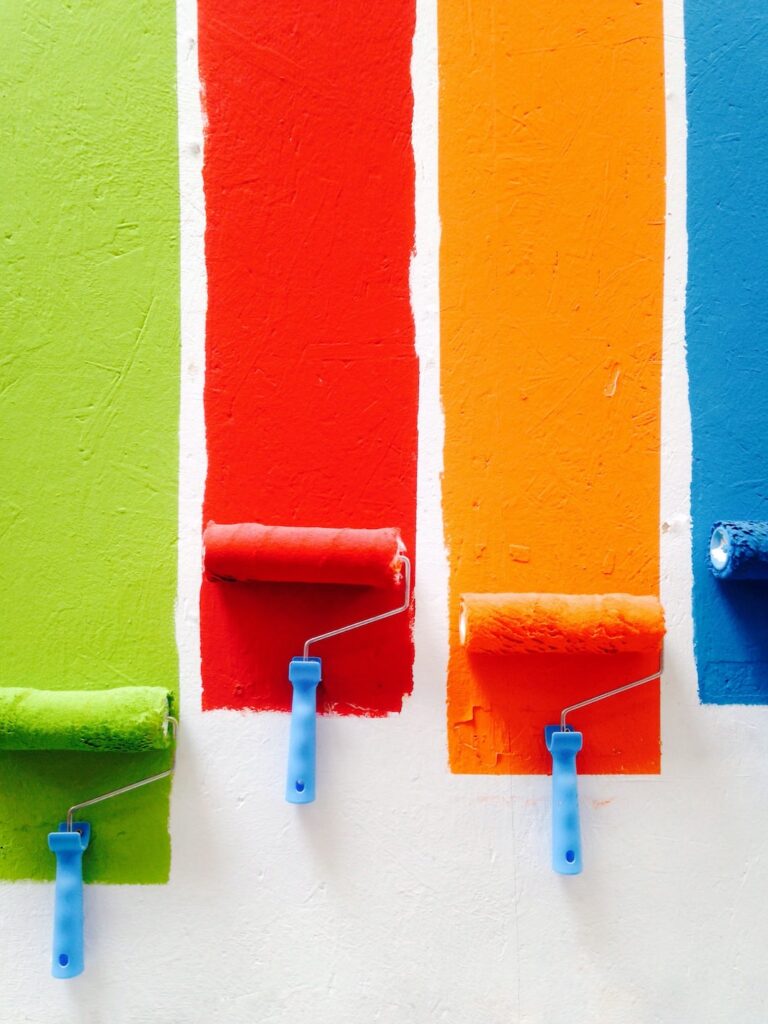
Green
naturalcoolgrowthmoneyhealthenvytranquilityharmonycalmnessfertility
Purple
naturalcoolgrowthmoneyhealthenvytranquilityharmonycalmnessfertility
Blue
calmserenitycolduncaringwisdomloyaltytruthfocusedun-appetizing
Brown
reliabilitystabilityfriendshipsadnesswarmthcomfortsecuritynaturalorganicmourning- some cultures
What Your Favorite Color Says About You
When it comes to branding, the power of color is both emotional and practical. On an emotional level, color can affect how consumers feel when they look at your brand. On a practical level it can help you stand out in the crowd.
Warm
Includes red, yellow and orange, and variations like pink. These colors evoke warmth due to their brightness and link to the sun. In general, they convey optimism, enthusiasm, and passion.
Cool
Includes green, blue, purple, and their variations like violet. These colors are considered cool as they commonly found in nature and are known for their calming effect. These colors are calming, relaxing, and subdued.
Neutral
Includes brown, black and white, as well as variations like gray. They’re often paired with warm or cool colors but are sophisticated on their own. They can be powerful and pure and are sometimes referred to as the earth tones.
Let’s Go Deeper in Meaning
The Art Therapy Blog, Art Therapy & Benefits
Red
Red has a range of symbolic meanings through many different cultures, including life, health, vigor, war, courage, anger, love and religious fervor. The common thread is that all these require passion.
Orange
Orange is associated with excitement, optimism and energy, used to convey a message of positivity. It’s an attention-grabbing, warm color that really pops when combined with cool blue or green tones.
Yellow
Yellow is a color associated with sun. It symbolizes optimism, energy, joy, happiness and friendship. It might also stand for intellect. On the contrary, yellow can indicate jealousy, betrayal, illness and danger.
Green
Green symbolizes good health and it’s also a healing color as it offers a balance between our body and mind. It brings harmony. The color green is the color of nature, growth, freshness, energy, and fertility.
Blue
The color blue represents both the sky and the sea and is associated with open spaces, freedom, intuition, imagination, inspiration, and sensitivity. Blue also represents meanings of depth, trust, loyalty, sincerity, wisdom, confidence, stability, faith, and intelligence.
Purple
The color purple is associated with a variety of meanings, including calm stability, wisdom, creativity, royalty, power, ambition, and luxury. It can also represent magic, extravagance, peace, pride, independence, and wealth.
So far, we have reviewed what color psychology is and how colors can affect your current state and emotions. It’s important to remember that the meanings behind each color can differ depending on culture and personal preferences. What you can do, however, is reflect on what they mean to you and how you can utilize them in your everyday life. And the next time you need a mood boost, surround yourself with the color that makes you feel happy – perhaps something cozy, inspired or energized?
Color theory summary
Red – danger, passion, excitement, energy
Pink – feminine, sentimental, romantic, exciting
Orange – fresh, youthful, creative, adventurous
Yellow – optimistic, cheerful, playful, happy
Green – natural, vitality, prestige, wealth
Blue – communicative, trustworthy, calming, depressed
Purple – royalty, majesty, spiritual, mysterious
Brown – organic, wholesome, simple, honest
White – purity, simplicity, innocence, minimalism
Black – sophisticated, formal, luxurious, sorrowful
Studies show multicolor – united, open, diversity. Now, what’s your favorite color? What color do you wear most? What color is your favorite blanket or cozy sweater? Comment below, I would love to hear about it the color that gives you energy.

Share
Tweet
Pin
Share
It’s Your Turn. Get Your Voice in the Conversation
Share your thoughts below, I’d love to hear from you.
[op3_comments_render][/op3_comments_render]
BRILLIANTMOMENTS
At the core, life is but a string of experiences, failures, and achievements. Lessons come with everything you do, we can’t control that. However, it’s an option for you to use failures and achievements as opportunities to be mindful, seek awareness and grow…and do so from a place of patience and self-love. Be kind to yourself. You are worthy. ~AC
FREE Webinars
DharmaMindBodySpiritIntentionPersonal Branding
Just for YOU
[op3_menu_render menu_id=’83’ uuid=’ldC10GfF’ page_id=’1168′ page_timestamp=’1707417202′][/op3_menu_render]
Login or Register for your FREE Account
Log into Your Account
Remember meLog In
Don’t have an account yet? Sign Up!
Logging in for the first time or lost password? Click here!
Create a New Account
Back to Log In form.
Password Reset
Back to Log In form.
Password Reset
The instructions to reset your password are sent to the email address you provided. If you did not receive the email, please check your spam folder as well.
Back to Log In form.
You are already logged in
© Andrea A. Callahan 2009-2024. All Rights Reserved @ACI Branding
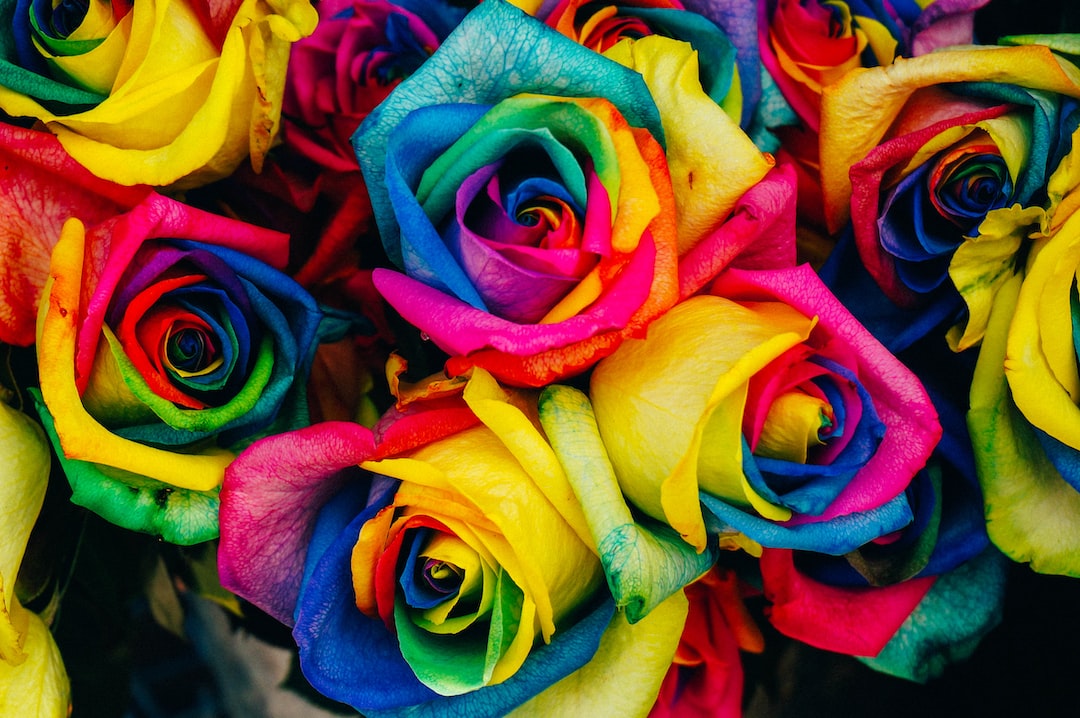
Leave a Reply
You must be logged in to post a comment.